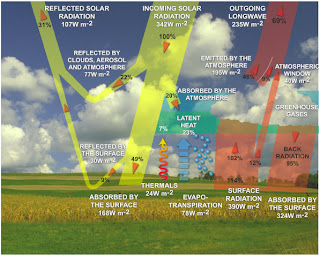What an interesting week! We've seen just about every thing except for a strong cold front this week. And I'm happy to think that we haven't left much on the table--only a few scraps here and there. For example, yesterday we likely could have launched 15 minutes earlier, which would have let early launchers the opportunity for a few more km. But in the overall scheme of XC flying, we've done our best.
The weather for today is tricky to work with. Radar already shows a line of rain/TS just south of Provo marching northwest into the area. This verifies the model forecast of S, SE winds aloft along the Wasatch front. A SE flow aloft means pretty much one thing: go to Jupiter. However, weighing in the rest of elements of the day does not make Jupiter a favorable place to launch, or wait (I'm thinking limited shelter from the rain).
Water vapor imagery, however, does show the Northern part of the state clearing up a bit. So what do our friends at the NWS have to say?
Area forecast discussion
National Weather Service Salt Lake City Utah
443 am MDT sun Sep 1 2013
Synopsis...a very moist airmass will remain across southern and
central Utah today. Some of this moisture will work into the
north overnight into Labor Day as a low pressure system moves
through the area. A drying trend will follow for the middle
portion of the upcoming week.
&&
Discussion...abundant moisture remains in place across southern
Utah...where GOES derived precipitable water values are at or above 1.5 inches
along the Utah/Arizona border...and surface dew points are running in the
low to middle 60s. In fact...60 degree dew points have spread as far
north as Delta...with precipitable water values at or above 1 inch as far north as
I-80. Additionally...an upper low is noted in satellite imagery
and objective analysis spinning near the Utah/AZ/NV triplepoint.
Isolated showers continue to rotate around this low across
southern and central Utah early this morning...however the majority
of convective activity from Saturday afternoon/evening has
diminished leaving extensive cloud cover across the area.
This upper low is forecast to largely remain in place throughout
the day before lifting northward through central and eventually
northern Utah overnight through Monday morning. With ample moisture
in place along with light flow aloft torrential rainfall will be
possible with showers and thunderstorms this afternoon and
evening across southern Utah. This activity is expected to spread
northward into central Utah this evening as the upper low begins to
lift northward...and eventually into northern Utah overnight into
the day Monday. As such have expanded the going Flash Flood
Watch northward through central Utah and extended it in time
through the overnight hours. Also increased probability of precipitation across
southern/central Utah through this evening...and across the north
overnight through Monday. In the meantime marginal middle level lapse
rates will continue to limit convective activity across northern
Utah until this upper low approaches the area overnight.
Interesting to see that even though water vapor imagery shows a drier air mass to the north, we still have 1 inch of precipitable water in the air along the I-80 line. SLC sits on that line.
I still love these XC Skies time height plots of parameters. Looking at RH shows a very moist air mass making its way over Provo in a S to SW wind throughout the day. With 80% + RH at the boundary layer top, there will be ample convective cloud forming with it positioned to take advantage of moisture above. This means it will tap into means to produce large TS in the region, just like yesterday.
One major concern for me today is that a thin cloud layer in the region already can HIDE towering cumulus quite well (embedded) within the lower cloud layer. This makes for a dangerous combo.
So what do we do? What to do? ... Today looks better than tomorrow, not that this matters... Visible satellite shows plenty of TS to the south and widespread cloud coverage except for the very NE tip of the state.
-CG













